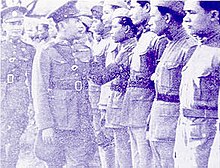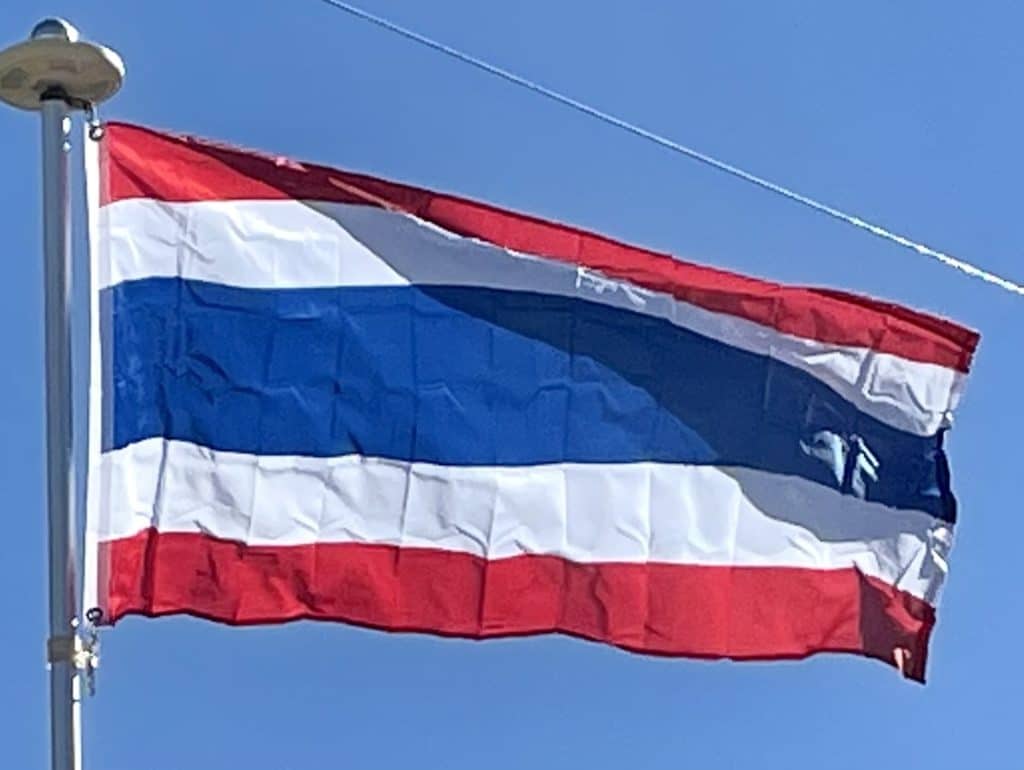

Later that decade, the army wing of Khana Ratsadon came to dominate Siamese politics. Plaek Phibunsongkhram who became premier in 1938, started political oppression and took an openly anti-royalist stance. His government adopted nationalism and Westernization, anti-Chinese and anti-French policies. In 1939, there was a decree changing the name of the country from “Siam” to “Thailand”. In 1941, Thailand was in a brief conflict with Vichy France resulting in Thailand gaining some Lao and Cambodian territories. On 8 December 1941, the Empire of Japan launched an invasion of Thailand, and fighting broke out shortly before Phibun ordered an armistice. Japan was granted free passage, and on 21 December Thailand and Japan signed a military alliance with a secret protocol, wherein the Japanese government agreed to help Thailand regain lost territories. The Thai government declared war on the United States and the United Kingdom. The Free Thai Movement was launched both in Thailand and abroad to oppose the government and Japanese occupation. After the war ended in 1945, Thailand signed formal agreements to end the state of war with the Allies. Most Allied powers had not recognized Thailand’s declaration of war.
In June 1946, young King Ananda was found dead under mysterious circumstances. His younger brother Bhumibol Adulyadej ascended to the throne. Thailand joined the Southeast Asia Treaty Organization (SEATO) to become an active ally of the United States in 1954. Field Marshal Sarit Thanarat launched a coup in 1957, which removed Khana Ratsadon from politics. His rule (premiership 1959–1963) was autocratic; he built his legitimacy around the god-like status of the monarch and by channelling the government’s loyalty to the king. His government improved the country’s infrastructure and education. After the United States joined the Vietnam War in 1961, there was a secret agreement wherein the U.S. promised to protect Thailand.
The period brought about increasing modernization and Westernization of Thai society. Rapid urbanization occurred when the rural populace sought work in growing cities. Rural farmers gained class consciousness and were sympathetic to the Communist Party of Thailand. Economic development and education enabled the rise of a middle class in Bangkok and other cities. In October 1971, there was a large demonstration against the dictatorship of Thanom Kittikachorn (premiership 1963–1973), which led to civilian casualties. Bhumibol installed Sanya Dharmasakti (premiership 1973–1975) to replace him, making it the first time that the king intervened in Thai politics directly since 1932. The aftermath of the event marked a short-lived parliamentary democracy, often called the “era when democracy blossomed”.
Constant unrest and instability, as well as fear of a communist takeover after the fall of Saigon, made some ultra-right groups brand leftist students as communists. This culminated in the Thammasat University massacre in October 1976. A coup d’état on that day brought Thailand a new ultra-right government, which cracked down on media outlets, officials, and intellectuals, and fueled the communist insurgency. Another coup the following year installed a more moderate government, which offered amnesty to communist fighters in 1978.
Fueled by Indochina refugee crisis, Vietnamese border raids and economic hardships, Prem Tinsulanonda launched a successful coup and became the Prime Minister from 1980 to 1988. The communists abandoned the insurgency by 1983. Prem’s premiership was dubbed “semi-democracy” because the Parliament was composed of all elected House and all appointed Senate. The 1980s also saw increasing intervention in politics by the monarch, who rendered two coup attempts against Prem failed. Thailand had its first elected prime minister in 1988.